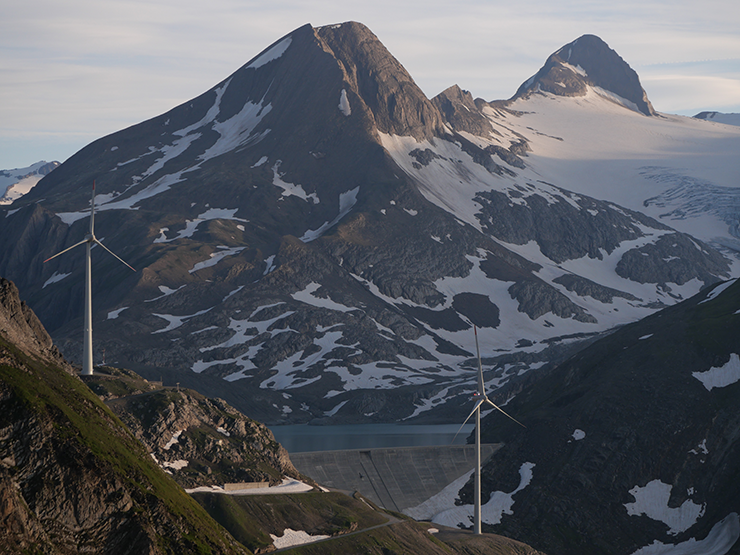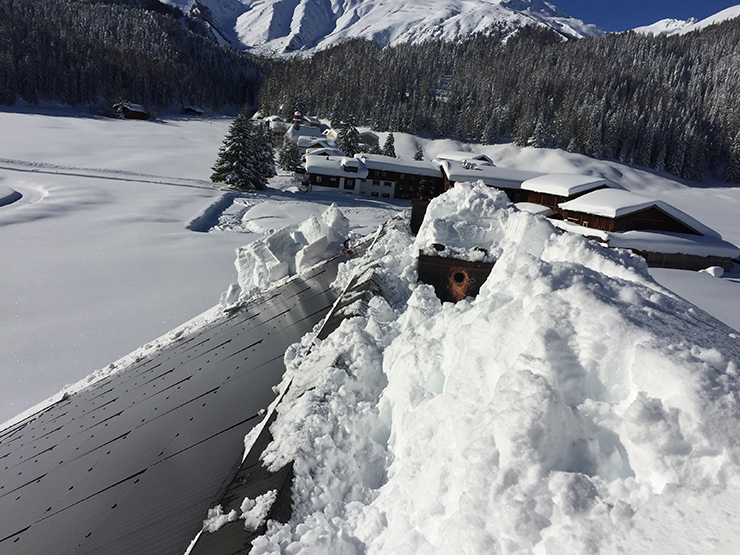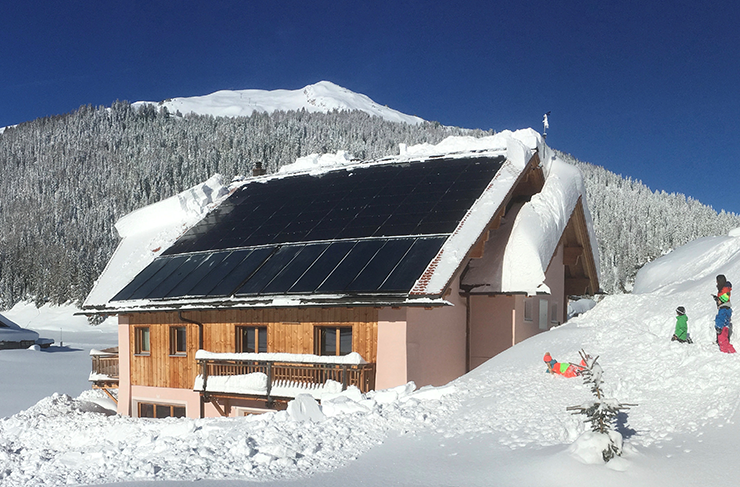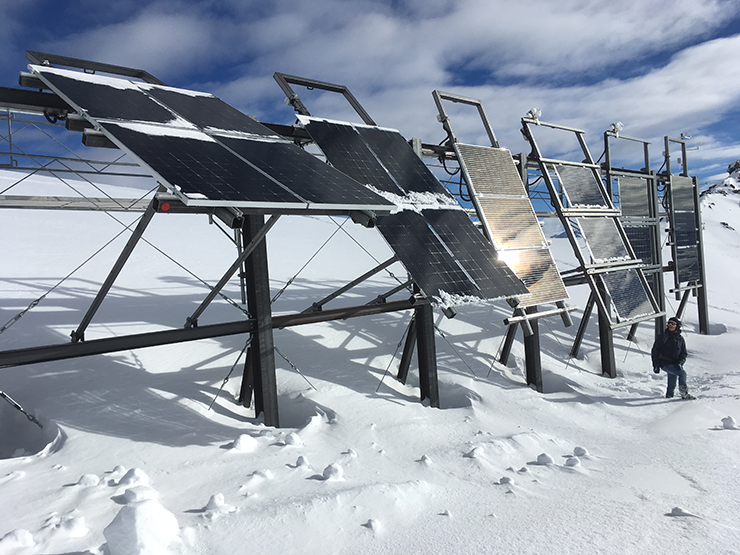100% renewable – 100% doable
The knowledge that wind power is very productive in winter and that photovoltaic (PV) installations can produce more electricity in alpine environments than in the valleys is not completely new. Yet these insights have remained little appreciated or acted upon. But with the energy transition pushing forward into a renewable future, this knowledge is of critical importance. As Switzerland is facing a substantial winter energy deficit with its nuclear power plants going offline, SCCER-SoE modelling results provide vital information as to how smart choices of installation location can help to fill this deficit with solar and wind power from the mountains.
The 2050 energy transition is not just about replacing the annual contribution of nuclear power; the real challenge is to produce enough electricity at the right time. Particularly in winter, Switzerland’s security of supply looks bleak, as high demand cannot be met by the relatively weak domestic production, and our neighboring countries might have a similar situation with increasing renewable electricity production. So, relying on imports is not only expensive but also unrealistic.
Establish optimal wind and solar power installation scenarios for Switzerland
Accordingly, it is important to align future electricity production as closely as possible with the demand. At the same time, compatibility with the existing electricity grid must be taken into account, otherwise new lines will have to be installed, and old ones expanded. When planning new solar and wind power plants, it is therefore not necessarily a question of maximizing individual annual production, but rather of achieving a production profile that adapts optimally to the temporal and spatial structure of Swiss electricity consumption and production from hydropower. We are a group of scientists from the EPFL that started the Laboratory of Cryospheric Sciences CRYOS project in the framework of the SCCER-SoE to take on this complex task of optimizing wind and (mountain) PV siting in parallel while simultaneously considering all constraints of the existing system.
With our contribution we show how Swiss electricity production can be best adapted to demand in a complex interplay between solar, wind and hydro power by adapting: 1) site selection, 2) mixing ratio of wind and solar production and 3) installation geometry of the PV modules. Controlled by a genetic algorithm, we determine optimal installation scenarios that are simultaneously compatible with the 2025 transmission grid.
We calculate the potential electricity production of the three energy sources water, wind and sun using in-house models based on detailed data sets for radiation, surface reflection, wind speed and water runoff. We represent both the varied topography of the Alps and the complex infrastructure of the Swiss hydropower system, as this is the only way to capture the spatial and temporal variability of the production. For each installation scenario, we obtain a different spatial distribution of the production with a different production profile. Using an optimal power flow model, we then determine the consequences of matching production and demand: how much electricity needs to be imported or exported and how stressed is the Swiss electricity grid as a result. The available hydroelectric power is used in a way that temporary production deficits, overproduction and possible bottlenecks in the grid are alleviated as much as possible. Constraints are considered for realistic sitings of both PV and wind installations. At the end of each analysis, the performance of the examined installation scenario is described using various metrics. We repeat this process using modified installation scenarios within the framework of an optimization procedure until we achieve maximum performance.
We use the required import as an objective function that guides the selection process and determines which solutions are most valuable. The optimization thus favors installation scenarios that minimize the import requirements and allow for maximum autonomy of the country.
Best results with 70% wind and 30% PV
The results show that the optimization achieves a 50% reduction in import with a simultaneous increase in productivity (compared to country-wide evenly distributed installations of PV and wind power). This is of key importance because it shows that high productivity and optimal timing are not mutually exclusive. It is possible to place PV and wind power installations in locations that are highly profitable and at the same time, produce electricity when it is most needed. It is even possible to do so without overloading the electricity grid. Despite the rather restrictive constraints that we apply for the possible installation locations for PV and wind power, the optimization algorithm is able to find suitable placements, without large compromises on their productivity. Best results are achieved with a mix of 70% wind and 30% PV, and the optimal locations are the Jura for wind turbines and the Alps for PV installations.
Blog Article
This article is now availabe in the SCCER-SoE blog in German, French and English with more detailed biographies of the authors.




